About a month ago, I got a Kindle as an early birthday present (Thanks Sachi's Mom!) Since that time, I've become consumed by not only the device, but the potential for it to become a foundation for Amazon to disrupt the publishing industry.
Indeed, there are two parts to any discussion about Kindle (1) the device and how it works (2) how Amazon will use it and it's Digital Text Platform to create a micro-payment economy for authors.
For now, I want to introduce a few aspects of the device, starting from taking out of the box. 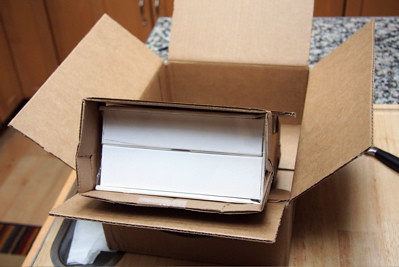
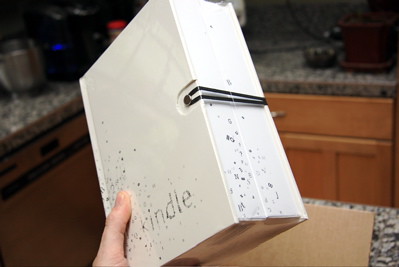
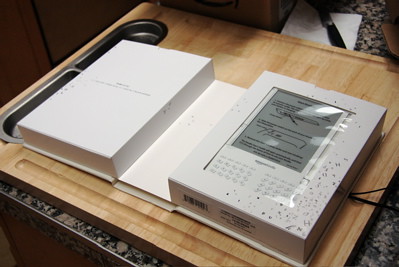
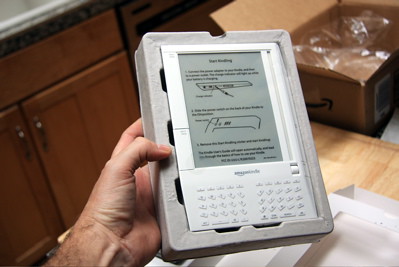
The strangest, most unsettling thing from the un-boxing? Amazon included a coupon for a free McDonalds chicken biscuit in the box. Amazon, please don't cheapen the experience for future Kindle buyers.
One of the awesome aspects of getting started is that the Kindle already knows who you are. Since you purchase it from Amazon.com, it arrives connected to your Amazon account and immediately connects to (Sprint's EVDO) cell-phone network called Whispernet, which quickly delivers books to the Kindle after purchase. This connection is free - paid-for by Amazon.
I don't think people understand that this cell phone connection means the Kindle is a 100% stand alone device - no computer needed. I dread connecting new devices to computers and it's so delightfully lightweight to skip that whole process and use a device that connects to a cell phone network instead. 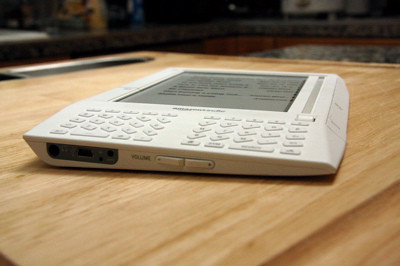
I'm not a huge fan of the physical design, though after using it regularly, I have become very comfortable with how it fits into the hand. I love reading before bed and always hated having to hold a book open. The Kindle makes reading easy.
Speaking of reading - people often wonder why they would use a Kindle when the same info (newspapers, blogs, etc.) is available on the Web. It's true - but for me, I want to get away from the computer and computer screen to read. The Kindle's screen is "e-Ink" and appears like a printed page, in tones of gray. It's not lit like a computer screen - it's easy on the eyes and looks better in light. This also helps the battery last a very long time.
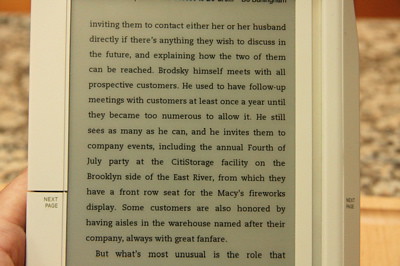
I have no idea how it works, but I'm fascinated by the glittery-gold cursor thing that allows you to make selections.
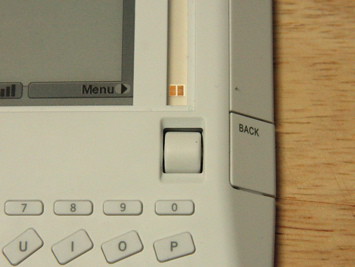
The "Next Page" and "Previous Page" buttons are huge and I often hit them accidentally. I find it hard to believe that the design team actually thought this was the optimal size. But, I'm used to it now and it does make paging very easy. There is no scrolling on the Kindle - only paging.
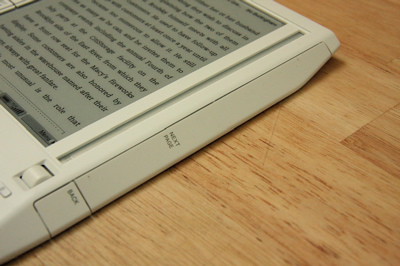
When it's in Sleep mode, it displays random illustrations of famous authors and tips. 
Buying books, periodicals, newspaper susbscriptions, etc. from the Kindle Store (accessible from the device and Amazon.com) is as easy as you would expect from Amazon. We've been giving Amazon digital money for years, so it's a no-brainer to do it from the Kindle - especially when books are delivered in seconds instead of days. I've found the selection of books sufficient and growing.
Overall I'm a big fan of the Kindle. It has some design issues, but I truly believe that it has a very bright future. People are quick to criticize it sight-unseen, but once you sit down with it, buy a book and understand how easy, lighweight and fun it is, you'll want one. I believe it is the future of reading.
But like I said, the device is only one part of the equation. What excites me most, and is least publicized, is Amazon's Digital Text Platform. More on that soon.
More Info:
Kindle: Amazon's New Wireless Reading Device
(now $359 - recently reduced)